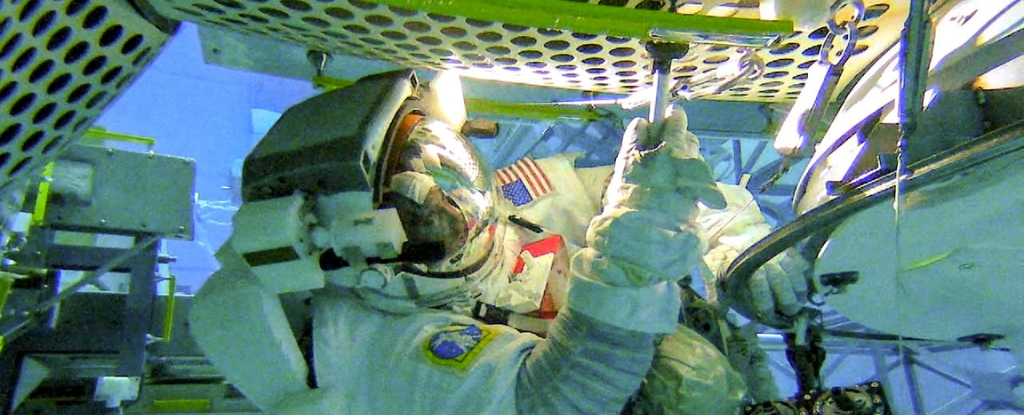We can say with confidence that birds are dinosaur Descendants, although paleontologists are still confused as to how this incredible evolutionary event took place.
Now, a fully fossilized bird skeleton that lived in what is now China some 120 million years ago could help clarify key steps in the transformation process, presenting a more archaic, dinosaur-like head on a body that has more in common with modern birds.
The transition from dinosaur to bird involves some of the most dramatic changes in form, function, and environment that ultimately led to the body plan typical of birds today.
Some of these switching functions can still be seen in the development of modern birds. But the order in which these changes occurred and the nature of the evolutionary pressures that led to purely avian traits is still open to debate.
The intriguing newfound fossil named Cratonavis zhuican provide important insights into the evolution of modern birds.
Researchers discovered the body imprint of Cratonavisthe dinosaur-headed bird, excavated in northern China.
body casts of feathers dinosaur and early risers, including Confuciusornis sanctuswere discovered in this region in sedimentary rocks formed during the 120 million years ago chalk Period.
Led by Chinese Academy of Sciences (CAS) paleontologist Zhou Zhonghe, scientists began examining the fossil skull using high-resolution computed tomography (CT).
Using the digital versions of the mineralized bones, the team reconstructed the shape and function of the skull as it was when the bird was alive.

The result shows that the shape of the Cratonavis Skull is almost the same as that of dinosaurs Tyrannosaurus rex, and not like a bird.
“The primitive skull features suggest that most Cretaceous birds such as Cratonavis could not move their upper beak independently of the brain and lower jaw, a functional innovation that is widespread among living birds and contributes to their enormous ecological diversity,” says CAS paleontologist Zhiheng Li.
The unusual combination of a dinosaur akinetic skull supplemented with a bird skeleton previous studies on the importance of evolutionary mosaicism in the early diversification of birds.
frameborder=”0″ allow=”accelerometer; autoplay; write clipboard; encrypted media; gyroscope; picture in picture; web-share” allowfullscreen>
Among the bird branches of the dinosaur family tree, Cratonavis is between the long-tailed Archeopteryxwho was more like a reptile, and the Ornithothoraceswho had already developed many characteristics of modern birds.
Also interesting is the fact that Cratonavis The fossil has a surprisingly long scapula and a first metatarsal (foot bone) – features rarely seen in the fossils of other dino-bird ancestors and absent at all in modern birds.
Evolutionary trends show a decreased length of the first metatarsal as birds evolved.
The study’s authors suggest that during the transition from dinosaurs to birds, the first metatarsal underwent a process of natural selection that made it shorter. Once it reached its optimal size, which was less than a quarter the length of the second metatarsal, it lost its previous functions.
The unique feature of an enlarged metatarsal in Cratonavis is more comparable to the late Cretaceous Balaur, a member of a group of feathered carnivores known as dromaeosaurids.
The extended shoulder blade became observed beforehand in Cretaceous birds such as Yixianornis and Apsaravis.
The fact that Cratonavis had a very long scapula, which probably made up for the fact that it did not have a sternum adapted to give the fleshy pectoral muscles a greater surface area to attach to. This extinct species may have contributed to a biological experiment on flight behavior.
One of the main authors, paleontologist Min Wang, explained “The elongated scapula may enhance the mechanical advantage of the humerus retracting/rotating muscle, compensating for the overall underdeveloped flight apparatus in this early bird, and these differences represent morphological experiments in volant behavior at the onset of avian diversification.”
The authors mention the abnormal morphologies of the scapula and metatarsals preserved in Cratonavis highlight the breadth of skeletal plasticity in early risers.
Cratonavis zhui‘s unique anatomical blend is less a stepping stone between two majestic categories of animals and more a sign of how all living things represent gradual changes and how birds of all feathers evolved along a multitude of different paths simultaneously.
The research was published in Natural Ecology & Evolution.





